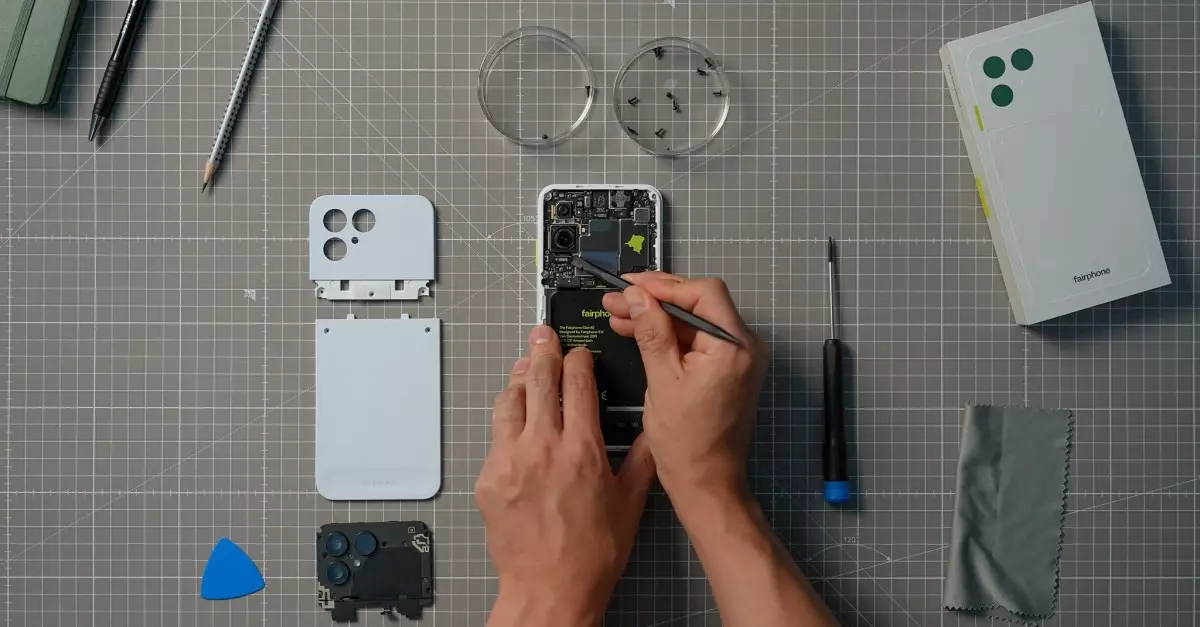The Fairphone 6 represents a bold statement that sustainability and repairability do not have to come at the expense of design or user experience. For years, the industry has prioritized sleekness, high-end specs, and fast-charging features—often sacrificing the long-term repairs and environmental impact along the way. Fairphone’s latest model challenges that norm, demonstrating that a smartphone can be both environmentally conscious and highly functional. Its standout achievement—receiving a perfect score from iFixit—cements its position as the benchmark for repairable tech. This is not just about convenience; it’s about advocating for a future where consumers take control of their devices, reducing electronic waste and promoting responsible consumption.
Design Innovation with User-Centric Modularity
One of the most striking aspects of the Fairphone 6 is its thoughtful redesign around a modular architecture, which is both refreshingly practical and forward-thinking. Unlike most smartphones that bury repairs behind glued components and complex assemblies, Fairphone has maintained a design that invites user empowerment. Although it no longer features tool-free battery swaps, the device’s use of only a T5 Torx screwdriver and a mere seven screws exemplifies minimal effort in maintenance. The delicate balance they strike—slim, lightweight, yet repair-friendly—shows that engineering solutions need not be clunky or proprietary to support sustainability. This model proves that unobtrusive and refined design can coexist with the practicality of easy repairs, setting a new standard for the industry.
Trade-offs and Realities in Technical Specifications
Despite its impressive durability and sustainability credentials, the Fairphone 6 makes some noticeable compromises in performance and hardware. Its dual-camera system is modest, suitable for casual photography but far from flagship-level quality. The Qualcomm Snapdragon 7S Gen 3 chipset, while capable enough for everyday tasks, falls short in top-tier speed and processing power. The USB 2.0 port, limited in data transfer speed, is another pragmatic choice that emphasizes durability over cutting-edge technology. However, the 6.3-inch LTPO OLED display with a 10-120Hz refresh rate offers an eye-catching visual experience that balances performance with energy efficiency. These trade-offs underscore a core philosophy: by prioritizing repairability, the Fairphone 6 invites users to accept certain hardware limitations in exchange for a device designed for longevity.
Commitment to Ethical Support and Longevity
What truly elevates the Fairphone 6 beyond its hardware is the company’s unwavering commitment to long-term support and ethical practices. With guaranteed software updates for seven years and security patches extending to eight years, Fairphone exemplifies a long-term vision often absent from the industry. Moreover, their five-year warranty and loyalty incentives encourage consumers to retain and repair their phones rather than discard them prematurely. The company’s transparent approach to parts availability—accessible from both Fairphone and iFixit—empowers users worldwide to extend their device’s lifespan. These efforts directly combat the throwaway culture prevalent in modern tech and demonstrate that sustainability and business viability can go hand in hand.
The Global Market and Price Implications
While the Fairphone 6 shines as a pioneering device in its domestic market, its global positioning reveals complex economic realities. Priced at €599 in Europe, it offers a relatively affordable entry point into sustainable technology. However, in the United States, the price jumps to $899, making it a less accessible option for many consumers. The exclusive availability through Murena, which ships with privacy-focused, de-Googled Android variants, further emphasizes how Fairphone aligns its mission with values of user privacy and ethical technology. This pricing disparity highlights an essential conversation about how market economics influence the adoption of sustainable tech and whether consumers worldwide are willing to invest in products that challenge the traditional, superficial specs-centric approach of the smartphone industry.
The Fairphone 6 stands as a testament that environmental responsibility and technological innovation can coexist without compromise. Its perfect repairability score, modular design, and dedication to long-term software support challenge industry giants to rethink their priorities. While it accepts certain technological concessions, the trade-offs are rational and aligned with a sustainable vision. Ultimately, Fairphone’s daring approach sparks a necessary dialogue—one that questions whether our current consumer habits are sustainable and if future devices can truly be built to last. As the market begins to shift, the Fairphone 6 reminds us that a future of repairable, ethical, and less wasteful technology isn’t just desirable—it’s entirely possible.

